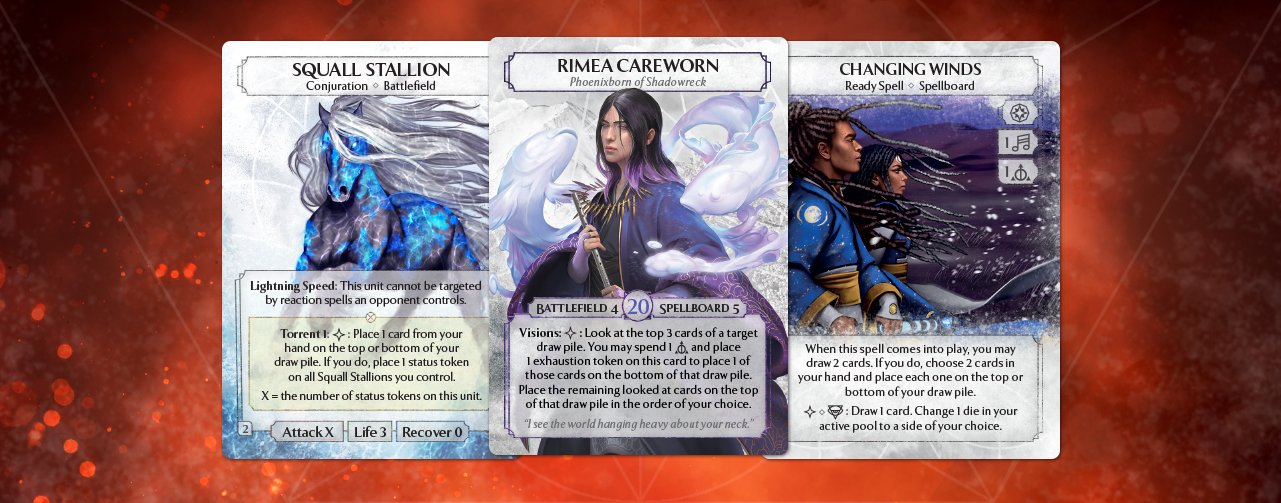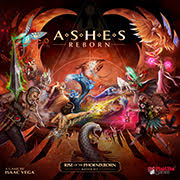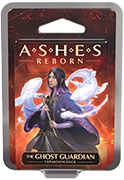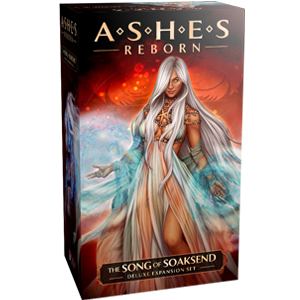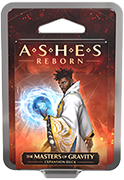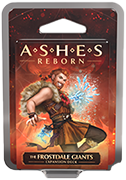Re-Constructed Decks - Rimea
Sight Beyond Sight
Welcome back, Ashes players, to another installment of Re-Constructed. I’m sorry to burden you so, but this deck might just push you to the brink.
By this point, you should already know the deck building restrictions we’re working with, and with these divine and sympathy magic decks you’ll also need “The Law of Lions” or “The Song of Soaksend” accordingly. Today is arguably the most difficult re-con in the whole bunch, sitting behind one of the least conventional Phoenixborn in the cast: Rimea Careworn. Among my small list of regrets is that I haven’t spent a lot of time talking about “reactive play”, and now we’re presenting a deck almost entirely driven around it. Get comfortable, this is going to get pretty heavy.
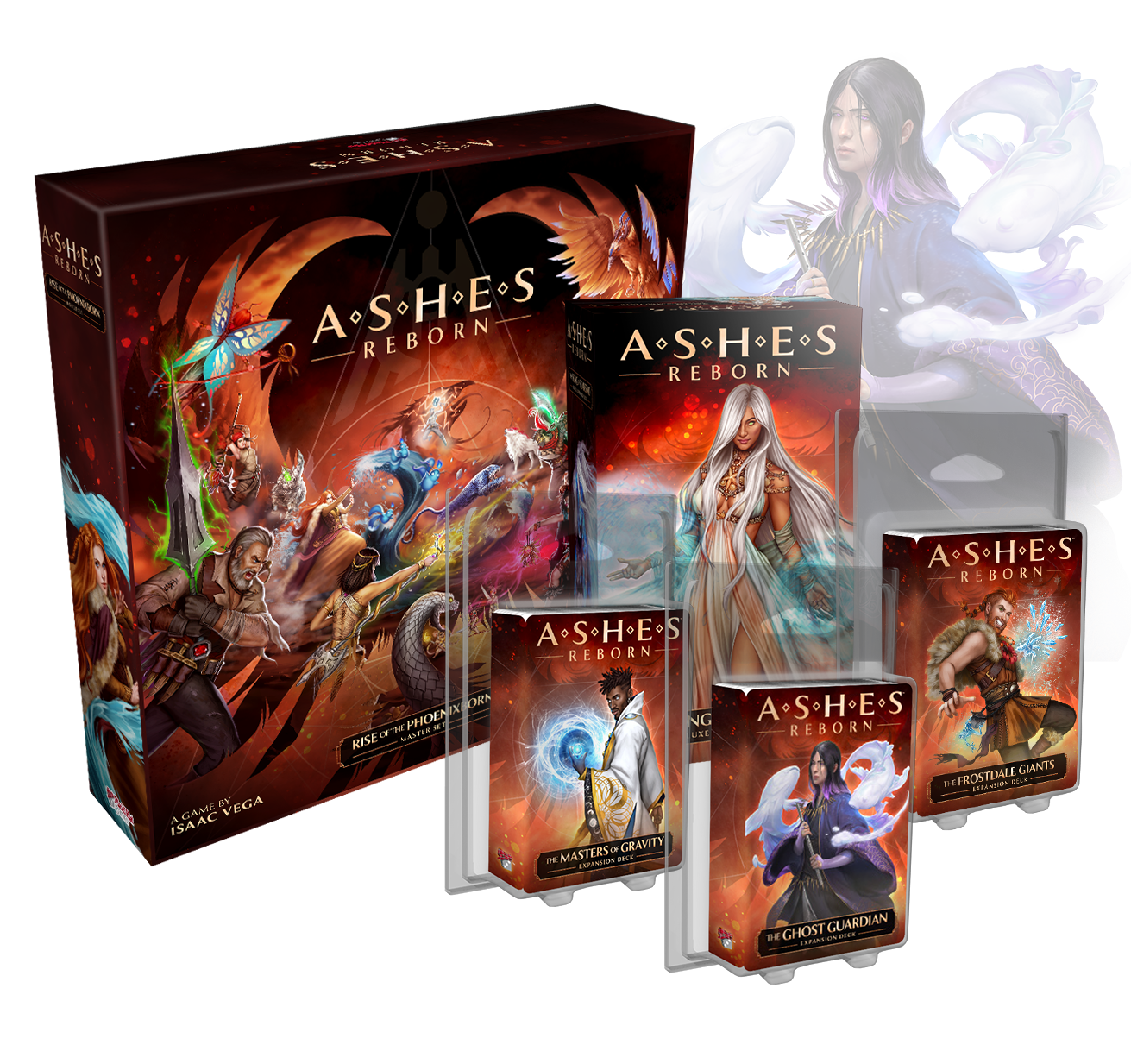
The Apocalypse Guardian (Re-Rimea)
Re-Constructed by Andrew DiLullo
6 Sympathy, 4 Illusion // Required Sets: The Frostdale Giants, The Masters of Gravity
1x Summon Squall Stallion
2x Summon Ghostly Mount
1x Augury
1x Changing Winds
2x Dark Presence
3x Frost Bite
1x Resonance
2x Shared Sorrow
1x Steady Gaze
2x Ancestral Army
1x Anchornaut
2x Battle Seer
3x Hollow
1x Polarity Mage
1x River Skald
3x Fade Away
1x Reflections in the Water
1x Shadow Strike
1x Shatter Pulse
Illusion magic tends to emphasize manipulation and surprise, while sympathy magic tends to evoke connections and complex systems. Honed together, they form the basis of Rimea’s playstyle: a defensive Phoenixborn looking to keep the opponent on their toes while constantly preparing for the future. The heart of her interactions comes through Vision, an ability that peeks at the top three cards of any player’s deck and rearranges them freely (or sends a problem card to the bottom for 1 basic). Where it gets crazy is that Rimea’s ability doesn’t exhaust her unless she tucks something, meaning she can continue to access future information at all times. Of course, doing so usually requires a plethora of side actions, so before we go any further I want to make a couple things crystal clear: you will be using a side action almost every single turn, and you will need to take some very aggressive passes with this deck (a concept we’ll be addressing later). That second point might make you a little uncomfortable, but it will all be worth it in the end.
Rimea’s pre-con is a little peculiar, featuring a whopping 15 spellboard cards, plus three copies of Resonance to amplify them leaving you with a deck that’s about 60% long-term play. She also has a petite 4 battlefield slots, and is looking to maximize them with Ghostly Mount, turning allies into horsemen of the apocalypse. This is a deck that wants the game to extend longer as it seems to keep increasing in power the longer the game goes, filling out an increasingly complex and intricate spellboard full of tools, tricks and nightmares. Once you’ve pushed past the upfront costs of your spellboard cards, you’ll be summoning 4/4’s for two dice, making all of your units incredibly difficult to block, and recycling your deck with multiple triggers of Memorialize combined with Shared Sorrows and several Auguries to keep finding your recycled tools. End-game Rimea is absolutely terrifying, and somewhat unstoppable in the right circumstances, but getting there is always going to be the trick. With today’s re-con, the main thing I’m looking to do is remove a lot of the deck’s fluff, bolster our mid game options, improve the consistency of our late game assembly, and even add a new potential win condition for the absolute end game. It sounds ambitious I know, but Rimea has the kind of vision we need to make it all come together.
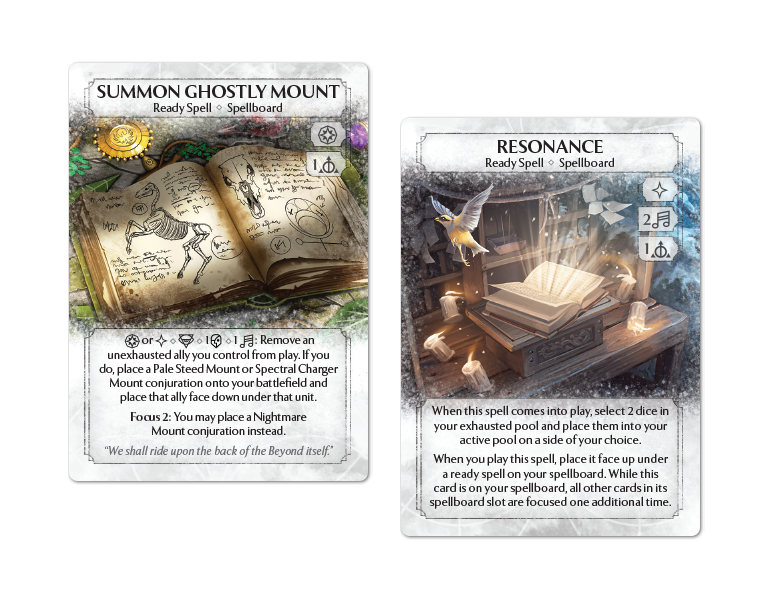
First, let’s clear the fluff. Most cards in the deck have been trimmed down to 1-2 copies. Rather than have a slew of Auguries and Resonances, we’re planning to get everything we need with just 1 copy of each, and while powerful, we really don’t need a full playset of any of our 3-cost allies (especially since we might be mounting Ancestral Army on occasion). Memorialize and Summon Ancestor Spirit have been removed entirely, mostly because they run slightly counter to the deck’s overall goals. Probably the strangest change on paper is running only 2 copies of Summon Ghostly Mount since the Focus 2 is so important, but I can assure you we’ll still be getting to our Nightmare Mounts pretty consistently.
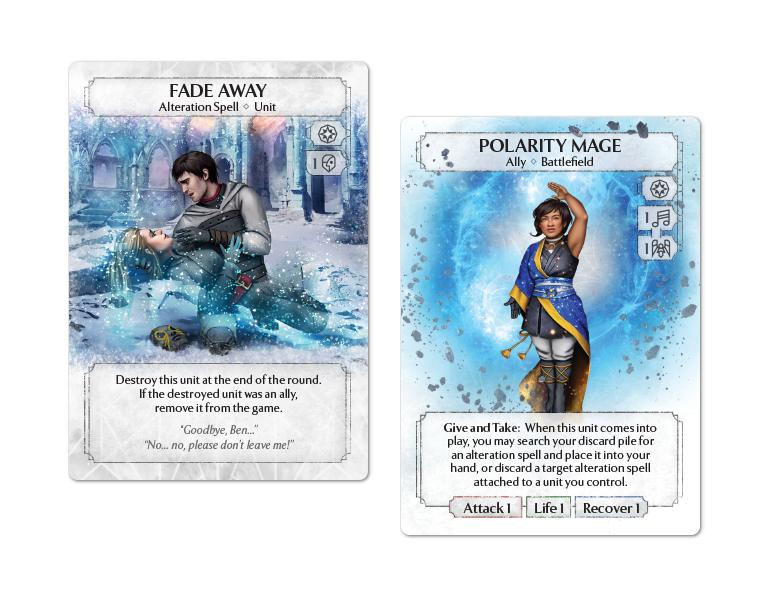
This opens up a lot of room for new and exciting spells and allies. We’ve included some excellent mounting allies in the form of Anchornaut and Polarity Mage, the latter of which will be absolutely brutal with the playset of Fade Aways that we’re running (and possibly good with Reflections in the Water). We’re also looking to improve Vision through powerful draw tools like River Skald and Squall Stallions. While Ancestor Spirit is a solid summon and goes well with Vision, our limited battlefield means that we need to make every slot count and Ancestor Spirits don’t tend to carry enough impact long term. Squall Stallion not only fills a similar roll with its card draw, but Torrent also gives us a way to filter through our deck for more spellboard assembly without actually reducing our deck size (it also adds to the whole “horsemen of the apocalypse” theme pretty nicely). Cards like Shadow Strike, Steady Gaze, and Shatter Pulse make for some decent versatile removal options while also filling in a slew of different magic play costs for Shared Sorrows to be extra effective.
Before we jump into the First Five, I want to talk about this idea of “aggressive passing,” something you may find yourself doing in this deck fairly often. Unlike most other Phoenixborn, Rimea often forces you in a bizarre position of needing to play more side actions than main actions. You’re definitely going to be using Vision more than once each round, not to mention various other side actions like Augury, Changing Winds, Squall Stallion’s Torrent (possibly more than once), and even Summon Ghostly Mount, and all of that is assuming you never meditate or use a dice power. So where do we get all these side actions from? Part of the elegance of Ashes is that rounds don’t reset unless both players pass back to back; this won’t always matter as much since players often use all of their main actions to do as much as possible before they start passing. However, you can also take advantage of that in earlier turns, knowing that if you pass, your opponent will feel the need to play something else and send priority back to you. The intent isn’t necessarily to skip an important main action, but rather to save it for later, and each time you get away with this you’re effectively generating one extra side action.
This is going to be an important concept in this deck because, weirdly, the goal of the early rounds isn’t necessarily to win the game. Rather, we want to set up a killer spellboard and use that to win the game later. We’ll be talking more about the specifics after the First Five section, but the primary strategy at work here centers around reactivity. A solid general way to think about playing this deck is to use main actions to answer your opponent’s gameplan, and use side actions to progress your own. It may sound a little counterintuitive, but don’t feel pressured to take main actions just because you can.
First Five:
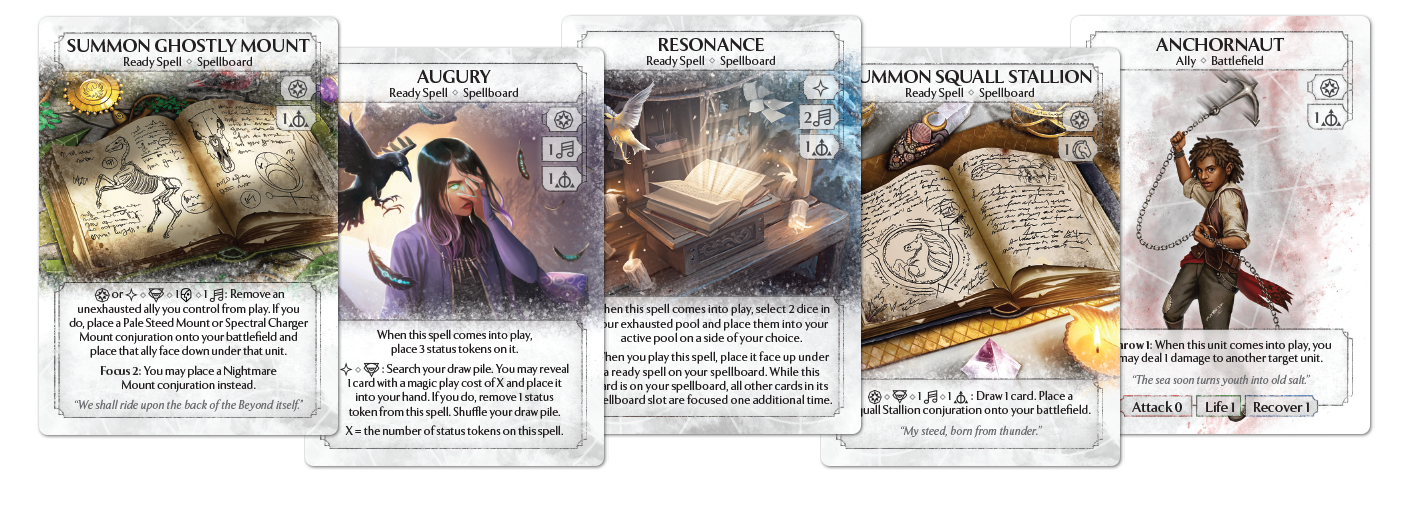
Let’s talk about how to pilot this first five, because it’s decidedly nonlinear. Like, there isn’t a strict order of operations here, much like a conversation with a fortune teller all the interactions are intentionally vague and often fuzzy. I’d say the safest way to open is with Summon Ghostly Mount and Resonance on turn one, getting some Sympathy Power symbols to help cast Summon Squall Stallion on the following turn. If you ever suspect your opponent is getting antsy for a big play, feel free to break out Augury earlier to help get to a powerful 3-drop on the next turn (more on this below). It’s hard to offer strong advice on planning your turn precisely with this first five, so instead I’ll simply recommend that you always play to your opponent. Against someone looking to go super fast, you might need to play Augury and search for an Ancestral Army on turn one just to match pace, whereas with slower opponents you can take your time and lay out your spellboard a bit more meticulously. Remember, it’s okay to pass if there’s no immediate need to answer the board.

I can see the future:
Next, let’s talk about Augury, and specifically our long term game plan around it. While this deck will be performing a fair amount of aggressive passing, the one crucial action we must partake in each round is Augury, our personal doomsday clock. We’ve definitely showcased Augury before with Dispel as a way to “cheat to the finish”, but for this deck we want to take advantage of every single pull. Our 3-cost fetch is either Ancestral Army or Battle Seer, whichever one you think will help you more in the current matchup. I tend to prefer Army because it allows me to achieve a full battlefield on round 1 and plays better with Ghostly Mount, but Battle Seer’s Alert and Quick Strike may prove to be a stronger deterrent in other cases. Our 2-cost fetch will always be Changing Winds; while we’ll be using Resonance to fix our dice in the first round, we’ll need some form of long term dice fixing to avoid too much meditation. Changing Winds is awesome here since it also has tremendous synergy with Vision, both on cast and on activation. If we manage to draw into Changing Winds earlier, we can grab River Skald or Steady Gaze instead. Our 1-cost fetch should be Summon Ghostly Mount, but if we’ve already found it we can grab Dark Presence or possibly Polarity Mage instead (don’t get Polarity Mage if you haven’t found any Fade Aways so far). Finally, our 0-cost fetch is Frost Bite, the end game finisher, and one we might need to grab multiple times. Once you have 2 or more Frost Bites in hand or play, you can comfortably replace Augury with the rest of your spellboard, which by the end should look like 2x Ghostly Mount books with Resonance, 1x Stallion book, 1x Changing Winds, 1-2x Dark Presences, and 2-3x Frost Bites. In other words, your spellboard should be able to completely obliterate your opponent with undercosted units, terrifying swings, direct damage, and a ridiculous amount of resources in hand that seem to keep growing.
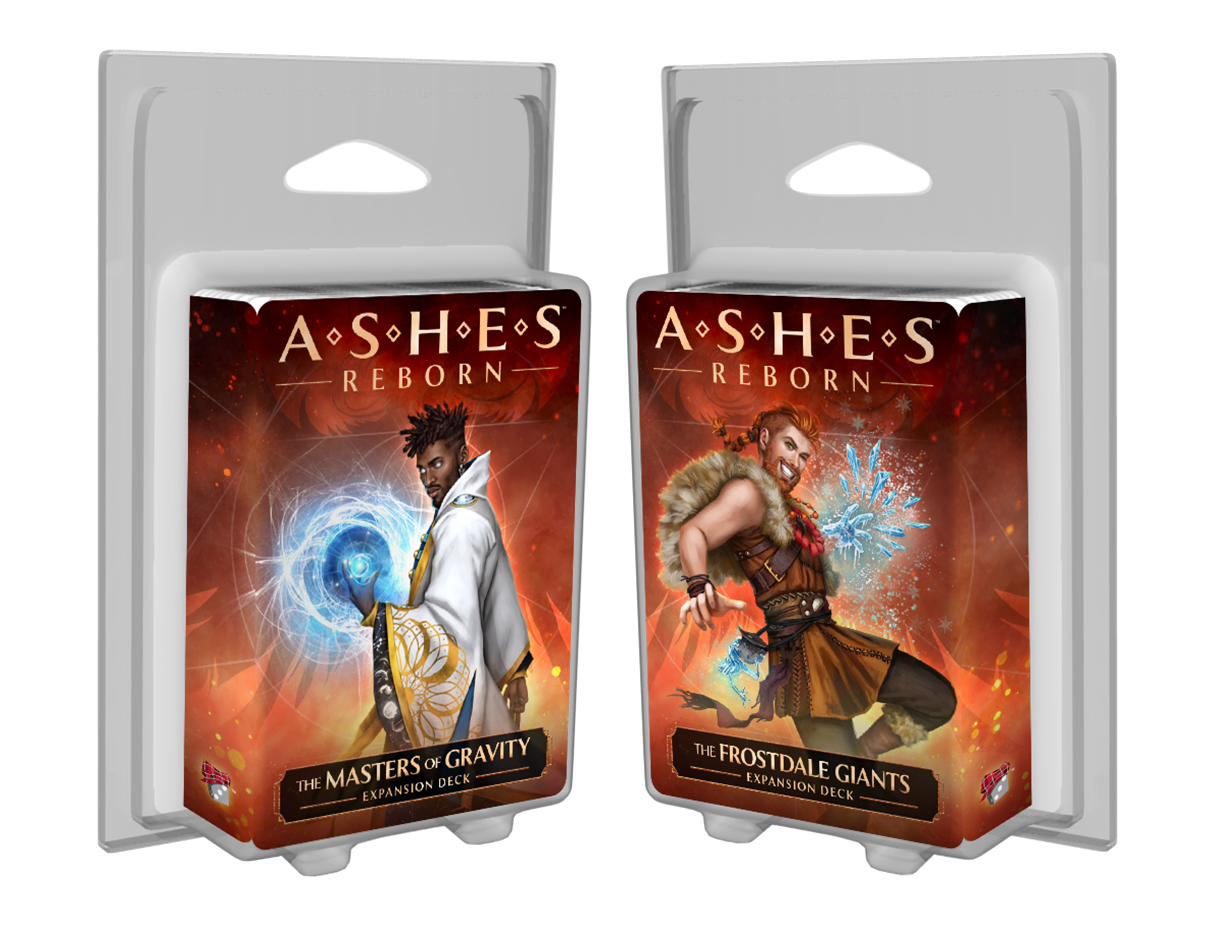
As was foretold:
You might have noticed that our two expansions are the exact same ones from the Xander deck. It’s not entirely coincidental as Polarity Mage neatly fits into either divine or sympathy magic decks, and as Echo has cards in both camps it’s very easy to get tools from his deck. Rin’s trio of Frost Bites is a little stranger since this isn’t a natural magic deck, but Frost Bite is pretty versatile thanks to its Focus 1 ability. However, for how much I like both of these inclusions, neither is entirely necessary...but they might be if you insist on staying in these magic types. Rimea’s biggest strengths exist in magic types outside of Illusion and Sympathy, so as long as you’re bound by the rules of the re-constructed pact like I am, the options are limited.
But, maybe you can change it. Maybe you can choose a better path...
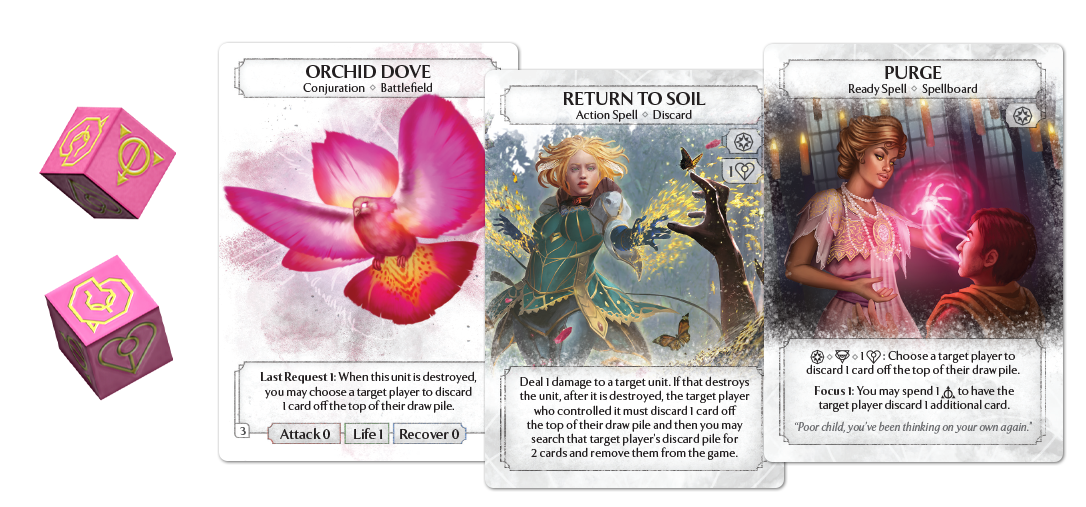
Taking it further:
I’d say the hardest thing about building a re-con for Rimea is knowing that her kit is often at its strongest in other dice types, namely charm and time magic. Sure, she still loves illusion and sympathy magic, and there are some powerful cards we didn’t use this time around like Abundance and Guilt Link, but I think charm and/or time magic is really where she shines. On the one hand, Rimea does quite well as an exhaustion-based Phoenixborn with a heavy charm magic supplement. Any card that discards cards off the top of the draw pile gains heavily increased power with Rimea since she can rearrange your opponent’s top three to guarantee more effective discards. To this end I like Purge and Summon Orchid Dove as a way to just empty your opponent’s draw pile quickly (and getting their focus effects is pretty easy), and I usually combine them with action spells like Return to Soil and Mind Probe, plus strong reactions like Strange Copy, Remorse, and Redirect (for the Doves). If you’re feeling really frisky, you could actually include a playset of Orchid Dove books into this deck since the Focus 1 effect lets you play the unit in any dice type (an earlier version of this re-con actually ran this before switching to Frost Bite). While you can also include Open Memories for consistency, it may not be needed depending on your card draw.
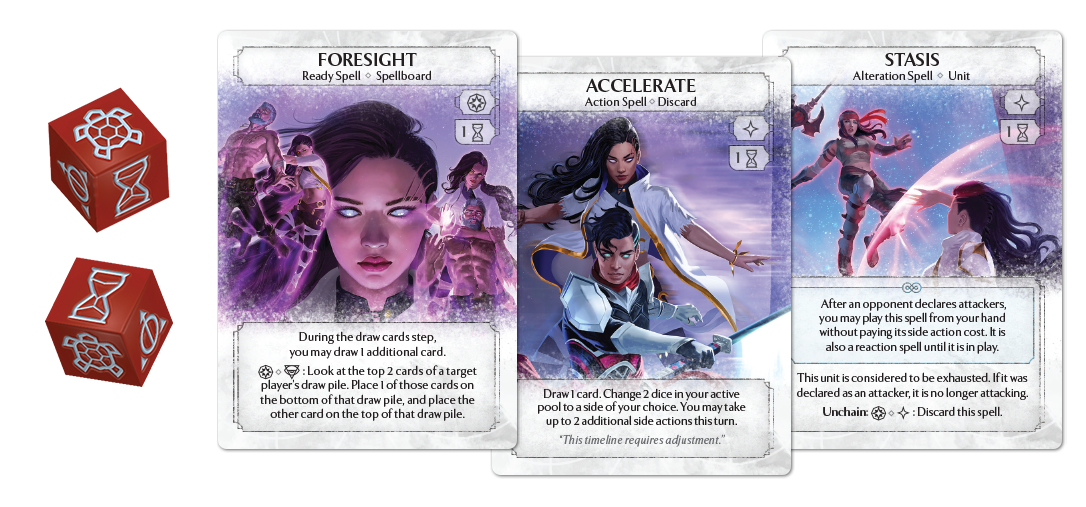
On the other hand you have time magic, which has one of my new favorite cards ever for Rimea: Foresight. This card is great not only as a way to help fill out a round with those crucial main actions you want, but also has incredible synergy with Vision and plays into your late game strategy by giving you lots of extra card draw over a long duel. Though there’s no shortage of other useful tools: Accelerate is awesome for your heavy side action economy and also gives you extra resources, and cards like Stasis and Swift Messenger have the flexibility to support an aggressive passing strategy very well (SM is also quite good with Ghostly Mount). Given the structure of this re-con, I think the time magic splash offers better options, while the charm magic route fundamentally changes how the deck plays. Neither path is wrong, of course; the future is yours to choose.
That’s all we’ve got for this article. Can you believe there’s only two left? Well, if you’re Polarity Mage, there’s only one left, and she’s going to be responsible for some particularly delirious Mind Maze shenanigans.
Andrew DiLullo is an animator, a game designer, and luckily also a writer. Having first discovered Ashes at the tail end of the first round of expansions in 2016, he’s been playing ever since and currently heads the Bay Area Ashes group in California. He was especially active in several community projects after Ashes was canceled the first time, and now puts his attention to Reborn as the game starts anew. He’s currently designing a board game in his spare time, and occasionally writes on his online journal: The Lighthouse Library.


